The Japan Awards for Biodiversity 2017
5 Excellence Awards including the Grand Prix were selected for The Japan Awards for Biodiversity 2017
Grand Prix
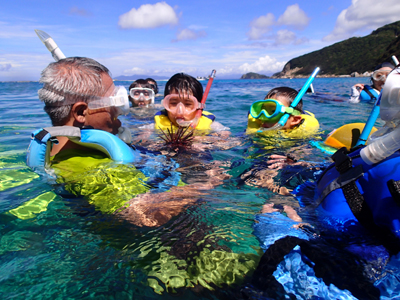
“Whole Island Museum of Kashiwa Island in the Southwest Tip of Kochi Prefecture” for Creating Sustainable Satoumi Landscape
Kuroshio Jikkan Center, NPO (Kochi Prefecture)
Although located in a temperate zone, Kashiwa Island in Kochi Prefecture is a rich repository of biodiversity which could surpass that in tropical or subtropical zones. In the surrounding ocean area of the island, which is strongly influenced by the warm Kuroshio currant, there extend reef-building corals and seaweed beds and over 1,000 species of fish, the highest number in Japan. By regarding the rich nature as well as lives of the people in the island as the “Whole Island Museum”, this project is an activity aimed at creating a model for sustainable satoumi landscape where the ocean and people nurture each other. Diversified stakeholders are working on this biodiversity from the viewpoints of fisheries and tourism and are realizing both preservation and utilization of marine resources.
Excellence Awards
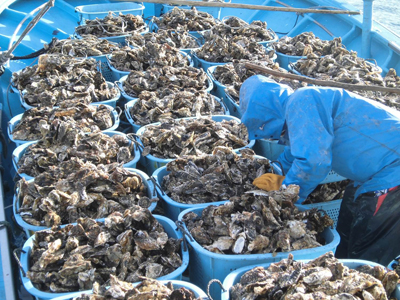
Sustainable, High-quality Giant Pacific Oyster Farming and Production through Acquisition of International Certification for Farming
Miyagi Prefecture Fisheries Cooperative Association (Miyagi Prefecture)
Miyagi Prefecture Fisheries Cooperative Association has tackled the reconstruction of facilities for oyster farming, which were completely destroyed by the Great East Japan Earthquake in 2011, from the viewpoint of sustainability. It now produces Giant Pacific oysters in coexistence with the ocean environment, and has improved both the speed of growth and quality of the oysters. Furthermore, in coordination with universities and other research institutes, NPOs, town offices and others, the association has actively cooperated in conducting environmental surveys and has acquired “Blue MSC Ecolabel” ASC certification and accreditation, which promotes sustainable farming, for the first time in Japan. Through conducting training of groups both from abroad and in Japan and displaying the certification mark on packages and elsewhere, it has also contributed to diffusing the certification system. The association has been promoting “sustainable farming” through integrating the citizens’ approach to the sea (satoumi), consideration of the ecosystem as well as consumption.
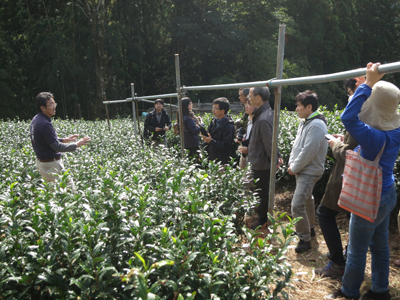
Development of Tools and Guidelines to Mainstream Biodiversity in Companies
Japan Business Initiative for Conservation and Sustainable Use of Biodiversity (JBIB)(Tokyo)
JBIB has organized many companies in various types of business which actively address the conservation of biodiversity as its members. Aiming at incorporating awareness of biodiversity into daily business practices, five working groups, namely “Business and Biodiversity Interrelationship Map”, “Sustainable Land Use”, “Water and Ecosystems”, “Forestation for Harmony with Nature”, and “Responsible Procurement” have been established in the JBIB, which have each developed the tools and guidelines that can contribute to the businesses in line with the actual situation of their business practices. The developed tools and guidelines have widely been published and disseminated, and used by not only the member companies but also non-member companies, thereby substantially contributing to mainstreaming biodiversity. The activity has been highly evaluated both domestically and abroad.
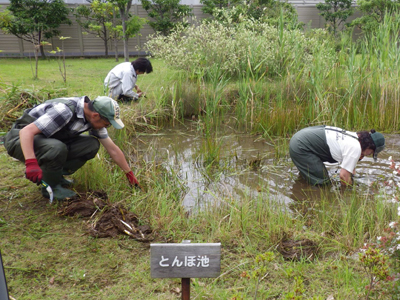
Project on How Far Do Dragonflies Fly
Forum on How Far Do Dragonflies Fly (Kanagawa Prefecture)
With a specific focus on dragonflies in the Keihin Industrial Area which have a high indexicality, the Forum on How Far Do Dragonflies Fly has energetically pursued its activities for 14 years in coordination with companies, offices, citizen’s groups, government agencies, experts and others in the Keihin coastal area. The forum has enjoyed conducting environment improvement activities over a long period of time and has since become one of the models used for working on biodiversity in urban areas. While it is a participatory activity in citizen science, its novelty in designing and implementing the hard task of chasing the dragonflies with markings stands out. By virtue of its citizen’s survey method and cooperative activity between citizens and corporations it has gained popularity as a new way of conducting biodiversity.
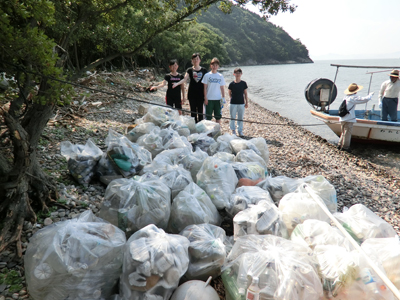
Challenge of Female Junior and Senior High School Students to Resolve the Issue of Garbage on the Sea Floor of Setonaikai, the Japan Inland Sea
Sanyo Women’s Junior and Senior High School, Geography and History Club (Okayama Prefecture)
To recover the ecosystems of their sea, female junior and senior high school students have been working on cleaning up the sea floor by taking on the multiple issues of “submarine garbage”, which is difficult to handle under the current framework of social systems and the treatment of which is now well overdue, and energetically carry out their activities from an educational institution standpoint. Their efforts involve purifying the environment of the sea floor by removing submarine garbage using fishing boat dragnets, thereby reducing the amount of accumulated garbage. Moreover, as regards household solid garbage, of which volumes to be recovered are far higher and which flows into the sea from the land via rivers, they have been enlightening the public to refrain from dumping such garbage through such experiences and learning that can be adopted in daily living, through means such as lecture visits and experiential learning. They have been appealing to the public far and wide both domestically and abroad on the issue of submarine garbage.
